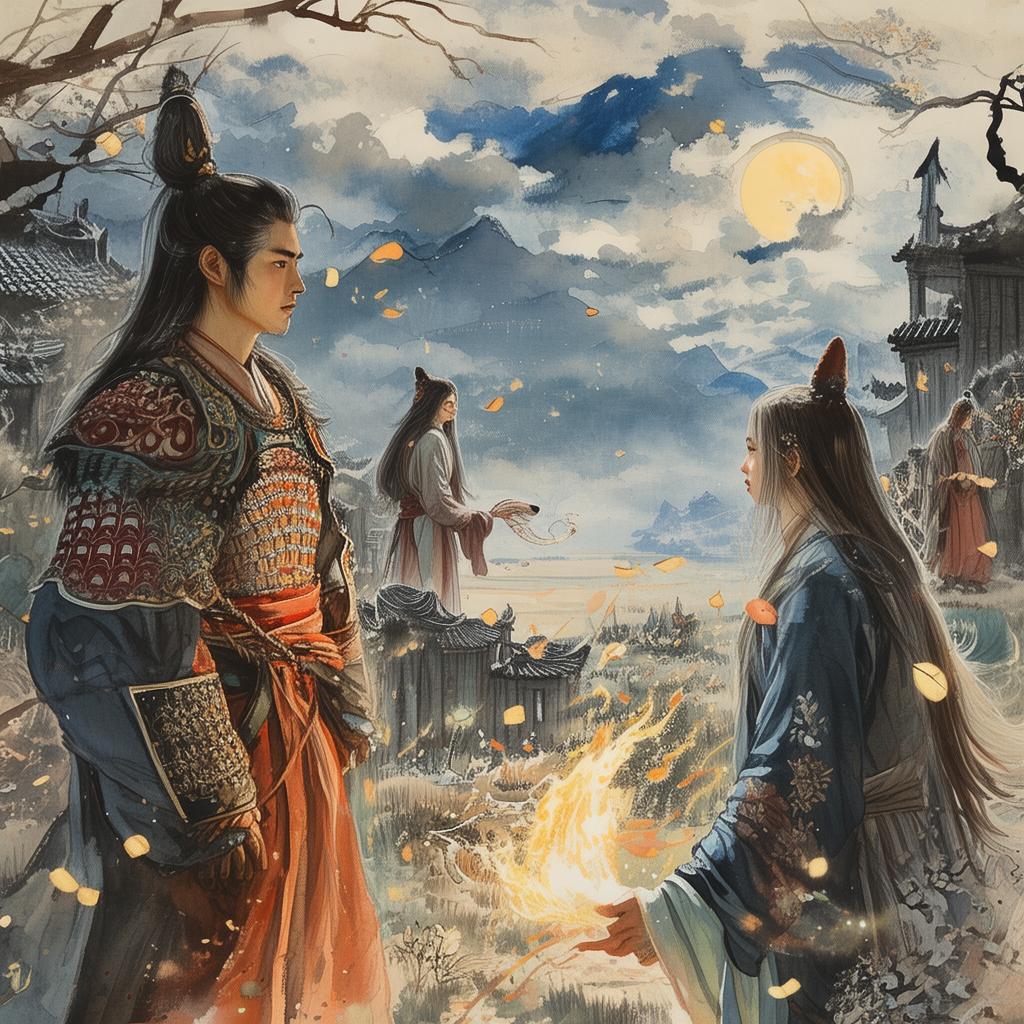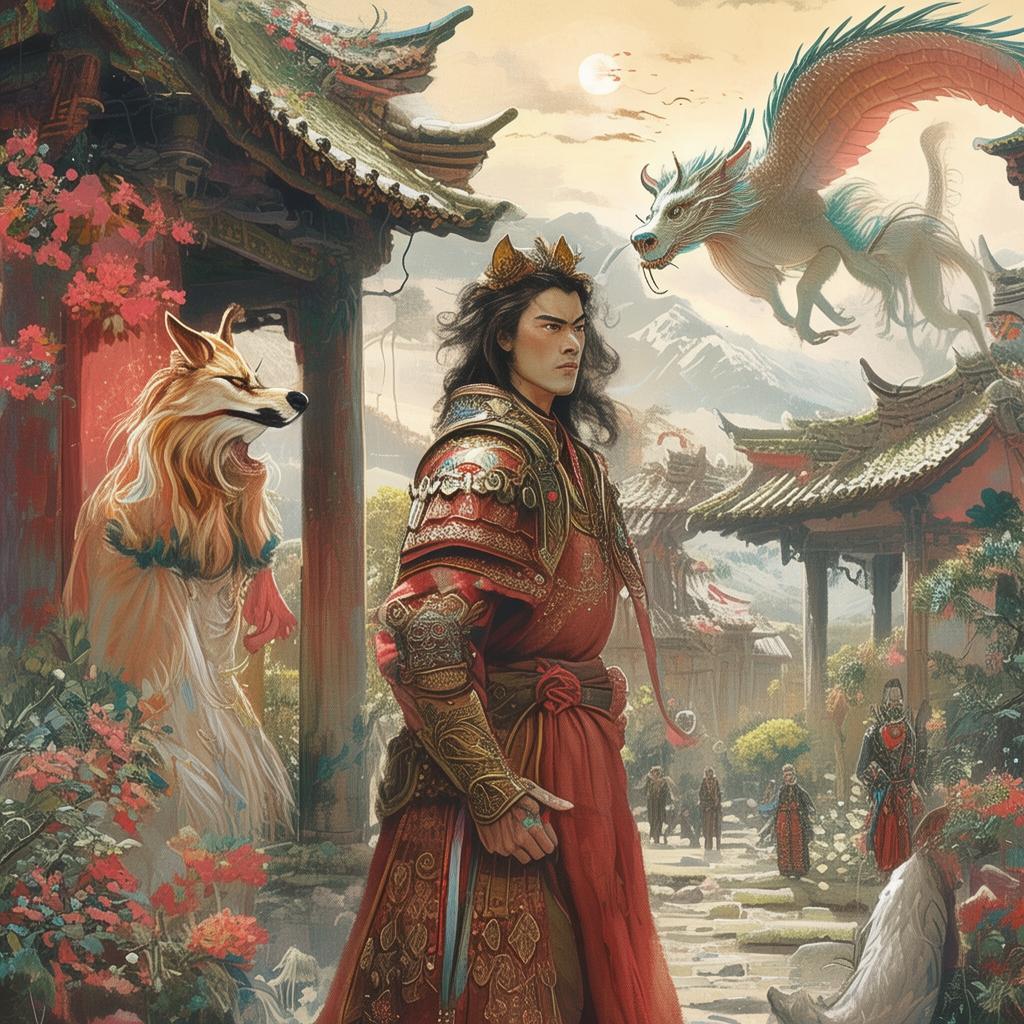The Zen Master's Quest for the Lost Temple
In the heart of ancient China, amidst the whispering bamboo groves and misty mountains, there lay a legend that had been passed down through generations. It spoke of a Zen Master who had vanished without a trace, leaving behind only a cryptic map that pointed to the entrance of a Lost Temple. This temple was said to be the resting place of profound enlightenment, a place where the mind could find its true essence and the spirit could soar beyond the confines of the physical world.
The Zen Master, known as Vimala, was a figure of great repute and wisdom. His teachings had reached the far corners of the land, and his name was synonymous with peace and clarity. Yet, Vimala had embarked on a quest that was as much a spiritual journey as it was a physical one. He sought the Lost Temple, not for power or wealth, but for the ultimate truth that lay hidden within its walls.

The map was a tattered parchment, its edges frayed and the ink faded with time. It was said to have been given to Vimala by an old monk who had seen the temple with his own eyes. The monk had whispered of a path that twisted and turned, leading through treacherous terrain and past places where the mind could not comprehend the world as it was.
Vimala, with his long, flowing robes and calm, serene face, began his journey. He carried with him only the essentials: a simple monk's staff, a small bowl for alms, and the map that held the key to his quest. His disciples, a few close students who had followed him on this quest, were a testament to his commitment to the path of enlightenment.
As they ventured deeper into the mountains, the landscape became more rugged and the air colder. The path was difficult, winding through dense forests and over treacherous cliffs. They encountered wild animals, fierce storms, and even the occasional bandit who sought to claim the map for their own ends.
One night, as they camped by a rushing river, Vimala sat alone by the fire, meditating deeply. His students, gathered around, felt the weight of the journey and the gravity of the quest. Vimala opened the map and examined it closely, his eyes reflecting the firelight.
"Follow the river," he said, pointing to a specific part of the map. "It will lead you to the temple. But remember, the path is not just of the body, but of the mind and spirit as well."
The next day, they followed the river, which grew wider and more powerful as they traveled. They passed through dense forests where the canopy blocked out the sun, and through open plains where the wind howled like a banshee. The map seemed to come alive, guiding them with a purpose that was almost tangible.
As they neared the end of their journey, they reached a vast plain where the ground was covered in strange, glowing stones. The stones seemed to hum with an ancient energy, and the air was thick with a sense of awe and reverence.
Vimala led his students to the center of the plain, where a large stone stood, covered in carvings that told the story of the temple's creation. The carvings spoke of a time when the world was young, and the temple was a beacon of light to all who sought enlightenment.
With a deep bow, Vimala approached the stone and placed his hand upon it. The carvings began to glow, and a hidden door opened in the ground before them. The air was filled with a strange, otherworldly light, and the scent of incense wafted through the air.
Vimala stepped forward, his students following closely behind. As they entered the temple, they were met with a series of chambers, each more magnificent than the last. They saw ancient texts, relics of wisdom, and paintings that depicted the lives of those who had walked this path before them.
The final chamber was the most breathtaking of all. It was a room of pure light, where the walls were made of shimmering crystals and the air was filled with the sound of a gentle wind. In the center of the room stood a pedestal, upon which rested an ancient scroll.
Vimala approached the pedestal, his heart pounding with anticipation. He reached out and took the scroll, unrolling it to reveal the teachings of the temple's founders. The scroll spoke of the true nature of the mind, the path to enlightenment, and the unity of all things.
As he read the scroll, Vimala felt a profound transformation within himself. He understood the true meaning of his quest, and the purpose of his journey. The Lost Temple was not just a physical place, but a metaphor for the journey within.
With a deep sense of peace and fulfillment, Vimala and his students left the temple, their hearts filled with gratitude and wisdom. They returned to the world, carrying with them the knowledge and enlightenment they had found within the walls of the Lost Temple.
The story of Vimala and the Lost Temple spread far and wide, inspiring countless others to seek their own paths to enlightenment. And so, the legend of the Zen Master's Quest for the Lost Temple continued to live on, a testament to the power of the human spirit and the quest for inner peace.
✨ Original Statement ✨
All articles published on this website (including but not limited to text, images, videos, and other content) are original or authorized for reposting and are protected by relevant laws. Without the explicit written permission of this website, no individual or organization may copy, modify, repost, or use the content for commercial purposes.
If you need to quote or cooperate, please contact this site for authorization. We reserve the right to pursue legal responsibility for any unauthorized use.
Hereby declared.









